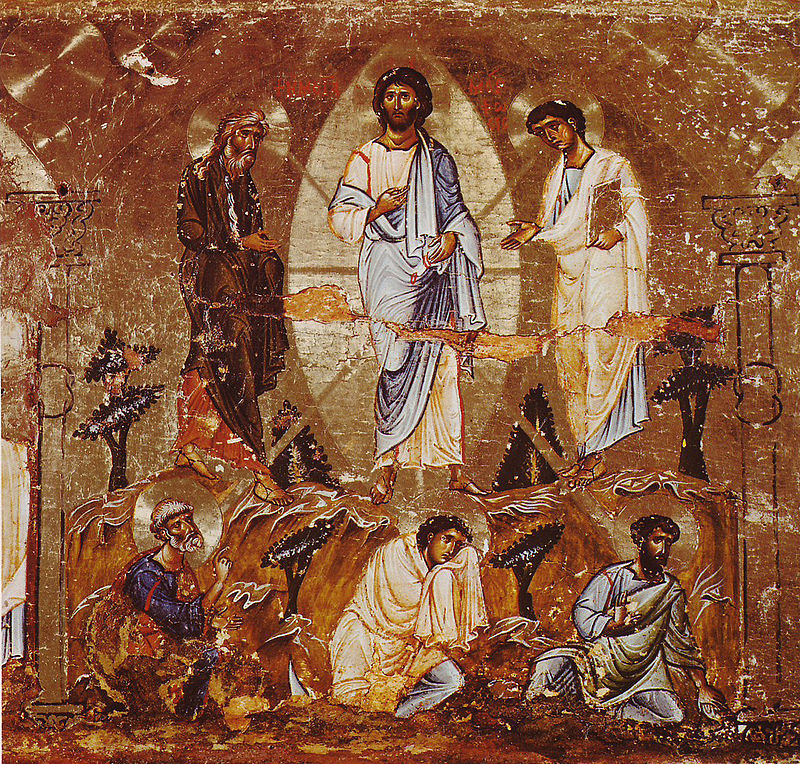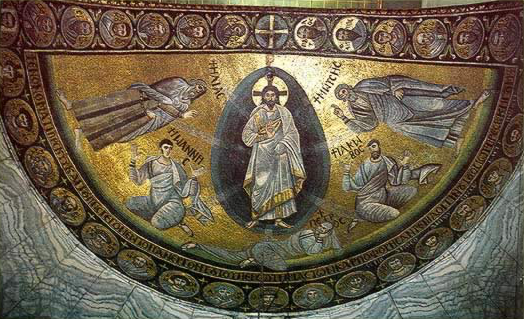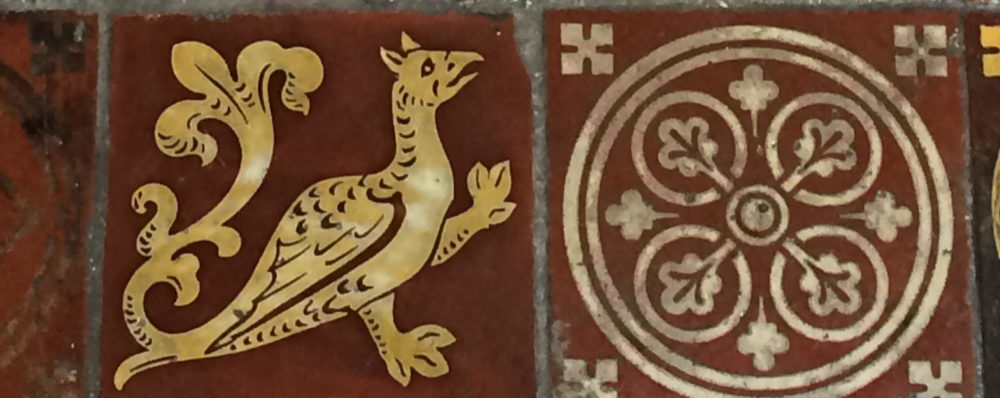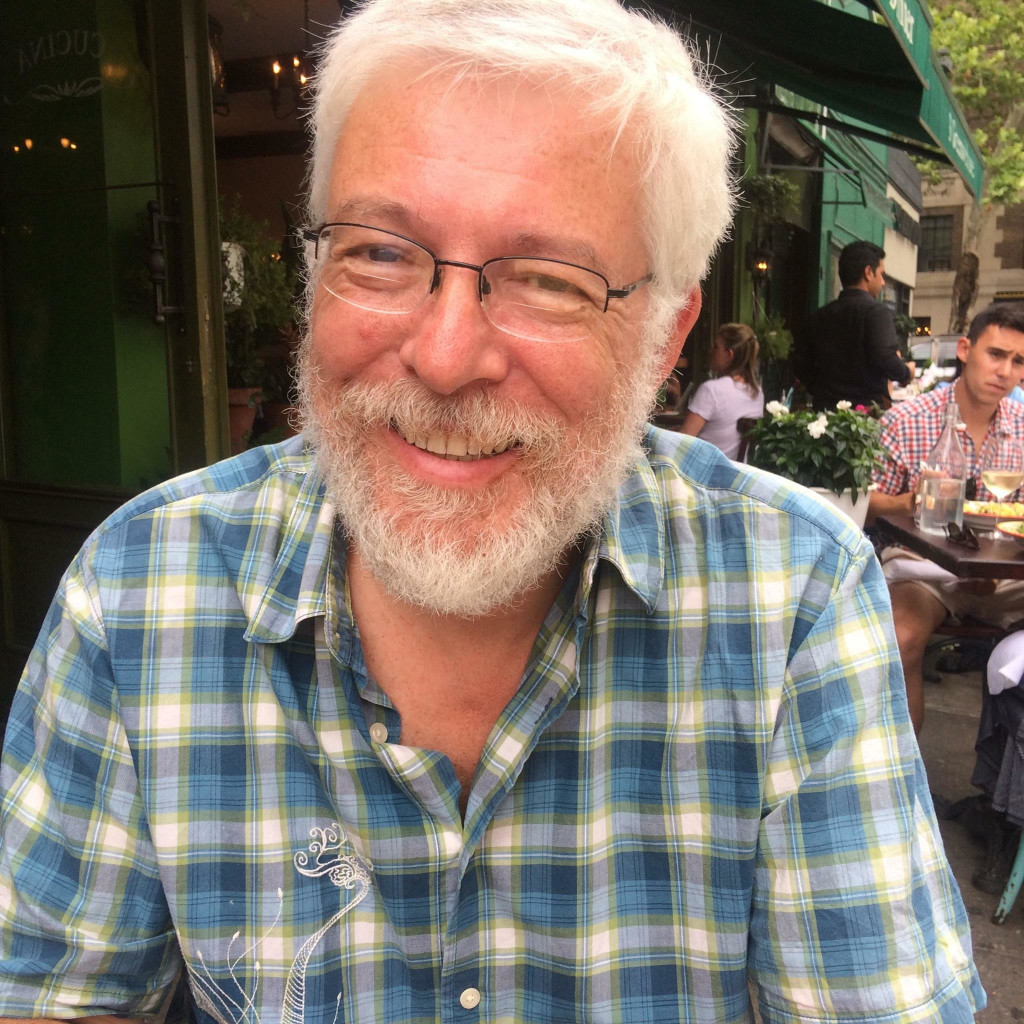
Christ took the apostles Peter, James, and John the Divine to the top of Mt. Tabor to pray. The apostles fell asleep. When they awoke, they saw Christ transfigured–more brilliant than the sun–and Moses was there, with the Prophet Elijah, speaking with Christ about the Passion that Christ would soon experience in Jerusalem. (Moses and Elijah–the primary representatives of the Law and the Prophets of the Old Testament–were also representative of the living and the dead as Elijah was taken alive into heaven by the chariot of fire and Moses died on Mt. Nebo just outside the Promised Land.)
Although seen by the apostles on Mt. Tabor, Moses is more commonly associated with Mt. Sinai. The famous monastery of St. Catherine (a treasure trove of manuscripts and icons) marks the place on Mt. Sinai where Moses is said to have encountered God–his own face shining more brightly than the sun afterwards–and Moses gazes out at the congregation in the monastery church from the Transfiguration mosaic behind the altar-table; the church on Mt. Sinai is dedicated to the Transfiguration, underscoring Moses’ connections with both Sinai and Tabor.
The oldest record of monastic life at Sinai comes from the travel journal written in Latin by a woman named Egeria about 381–384. She visited many places around the Holy Land and Mount Sinai, where, according to the Old Testament, Moses received the Ten Commandments.
The monastery was built by order of Emperor Justinian I (reigned 527–565), enclosing the Chapel of the Burning Bush (also known as “Saint Helen’s Chapel”) ordered to be built by Empress Helena, mother of Constantine the Great, at the site where Moses is supposed to have seen the burning bush. The living bush on the grounds is purportedly the one seen by Moses. The place where Moses is said to have received the Ten Commandments is further up the mountain, behind the monastery.
The library at the monastery preserves the second largest collection of early codices and manuscripts in the world, outnumbered only by the Vatican Library The large icon collection begins with a few dating to the 5th-6th centuries; these icons are unique as the monastery was untouched by Byzantine iconoclasm, and never sacked.



